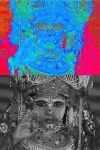Evolving concepts of sensory adaptation
- PMID: 23189092
- PMCID: PMC3501690
- DOI: 10.3410/B4-21
Evolving concepts of sensory adaptation
Abstract
Sensory systems constantly adapt their responses to match the current environment. These adjustments occur at many levels of the system and increasingly appear to calibrate even for highly abstract perceptual representations of the stimulus. The similar effects of adaptation across very different stimulus domains point to common design principles but also continue to raise questions about the purpose of adaptation.
Figures


Similar articles
-
Predictive activation of sensory representations as a source of evidence in perceptual decision-making.Cortex. 2021 Mar;136:140-146. doi: 10.1016/j.cortex.2020.12.008. Epub 2020 Dec 23. Cortex. 2021. PMID: 33461733
-
Perceptual and neural consequences of rapid motion adaptation.Proc Natl Acad Sci U S A. 2011 Nov 8;108(45):E1080-8. doi: 10.1073/pnas.1101141108. Epub 2011 Jun 27. Proc Natl Acad Sci U S A. 2011. PMID: 21709221 Free PMC article.
-
Aftereffect of adaptation to Glass patterns.Vision Res. 2005 May;45(11):1355-63. doi: 10.1016/j.visres.2004.12.016. Vision Res. 2005. PMID: 15743606
-
Sensory Adaptation in the Whisker-Mediated Tactile System: Physiology, Theory, and Function.Front Neurosci. 2021 Oct 29;15:770011. doi: 10.3389/fnins.2021.770011. eCollection 2021. Front Neurosci. 2021. PMID: 34776857 Free PMC article. Review.
-
Information theory of adaptation in neurons, behavior, and mood.Curr Opin Neurobiol. 2014 Apr;25:47-53. doi: 10.1016/j.conb.2013.11.007. Epub 2013 Dec 14. Curr Opin Neurobiol. 2014. PMID: 24709600 Free PMC article. Review.
Cited by
-
The effect of odor enrichment on olfactory acuity: Olfactometric testing in mice using two mirror-molecular pairs.PLoS One. 2020 Jul 30;15(7):e0233250. doi: 10.1371/journal.pone.0233250. eCollection 2020. PLoS One. 2020. PMID: 32730274 Free PMC article.
-
Commentary: Cafeteria diet impairs expression of sensory-specific satiety and stimulus-outcome learning.Front Psychol. 2015 Apr 30;6:536. doi: 10.3389/fpsyg.2015.00536. eCollection 2015. Front Psychol. 2015. PMID: 25983710 Free PMC article. No abstract available.
-
Action Recognition in a Crowded Environment.Iperception. 2017 Dec 21;8(6):2041669517743521. doi: 10.1177/2041669517743521. eCollection 2017 Nov-Dec. Iperception. 2017. PMID: 29308177 Free PMC article.
-
Adaptation to Noise in Human Speech Recognition Unrelated to the Medial Olivocochlear Reflex.J Neurosci. 2018 Apr 25;38(17):4138-4145. doi: 10.1523/JNEUROSCI.0024-18.2018. Epub 2018 Mar 28. J Neurosci. 2018. PMID: 29593051 Free PMC article.
-
Super recognizers: Increased sensitivity or reduced biases? Insights from serial dependence.J Vis. 2024 Jul 2;24(7):13. doi: 10.1167/jov.24.7.13. J Vis. 2024. PMID: 39046722 Free PMC article.
References
-
- Gibson JJ, Radner M. Adaptation, after-effect and contrast in the perception of tilted lines. I. Quantitative studies. Journal of Experimental Psychology. 1937;20:453–67. doi: 10.1037/h0059826. - DOI
-
- Wohlgemuth A. On the aftereffect of seen movement. British Journal of Psychology Monograph Supplement. 1911;1:1–117.

